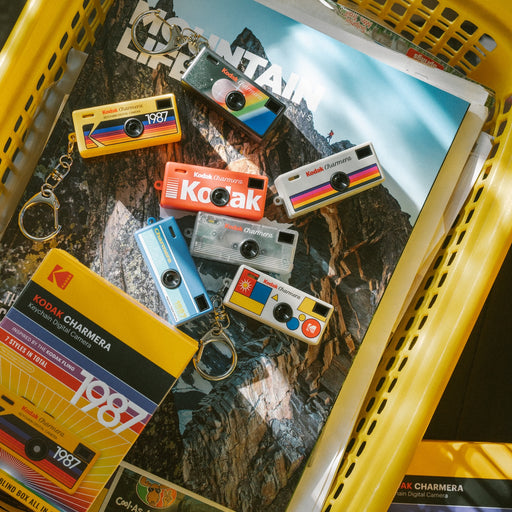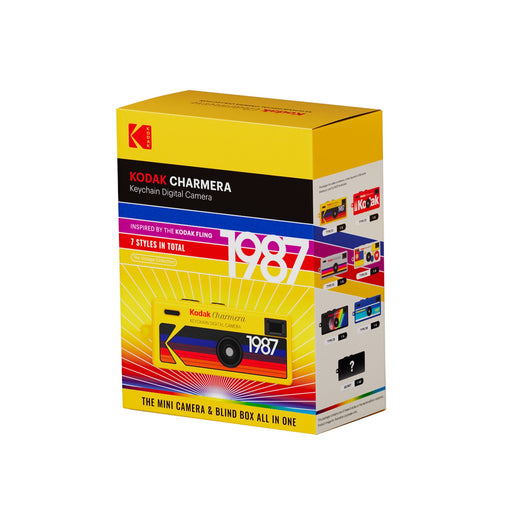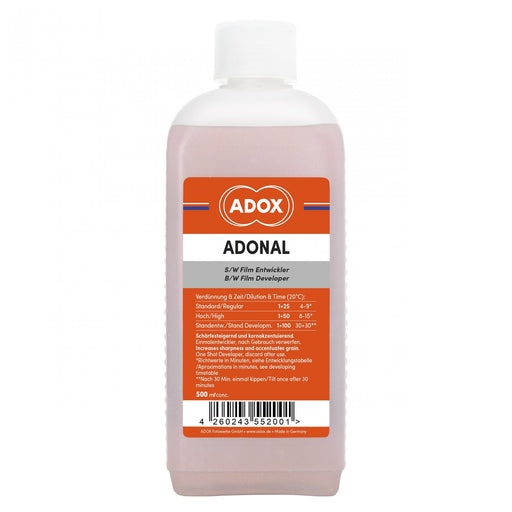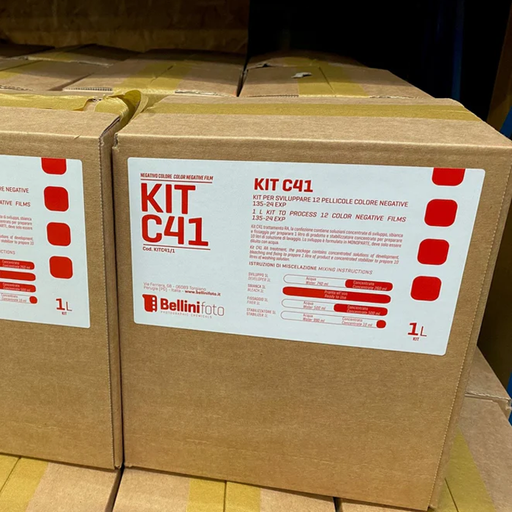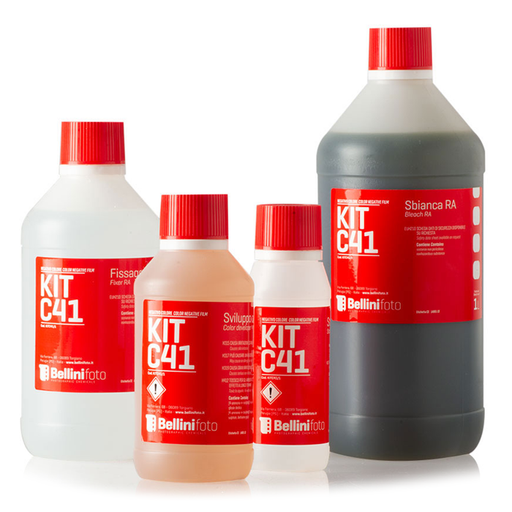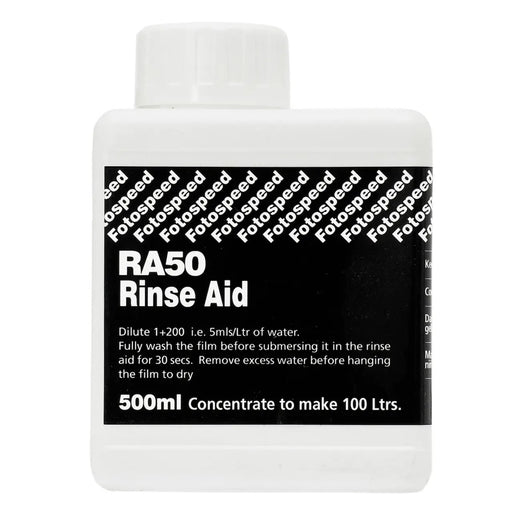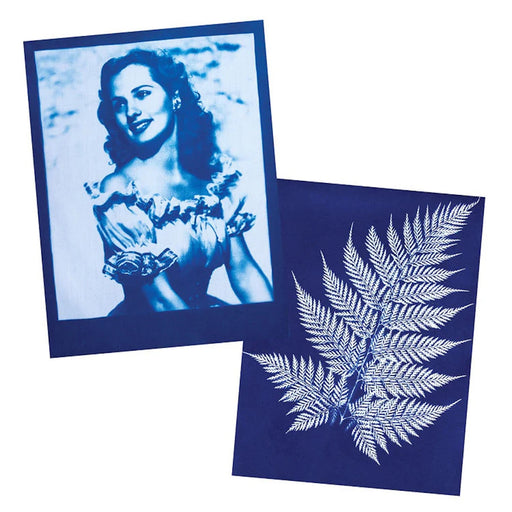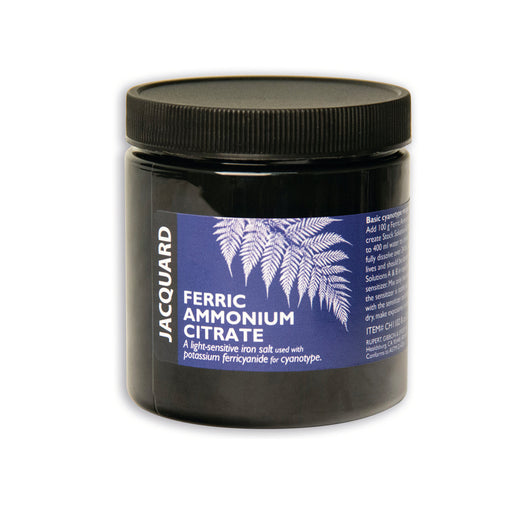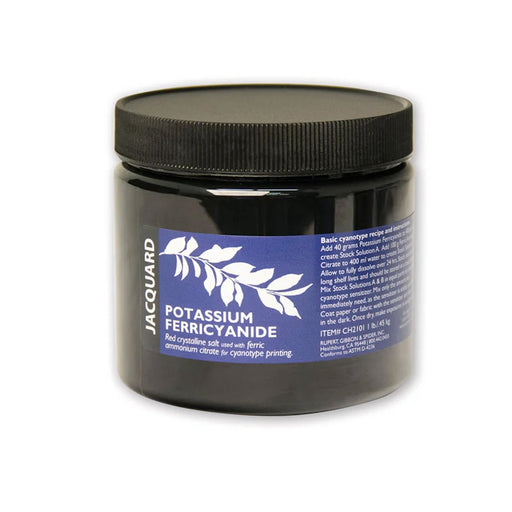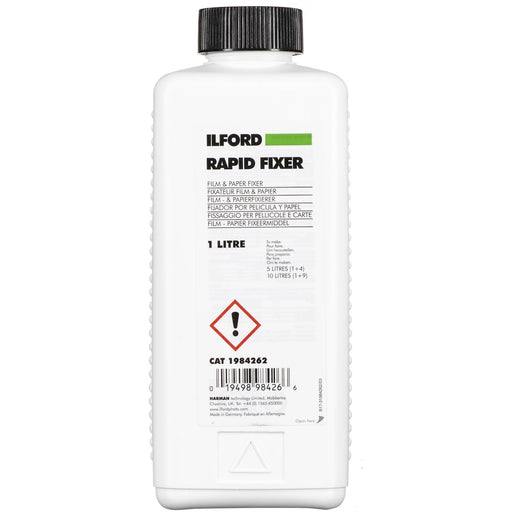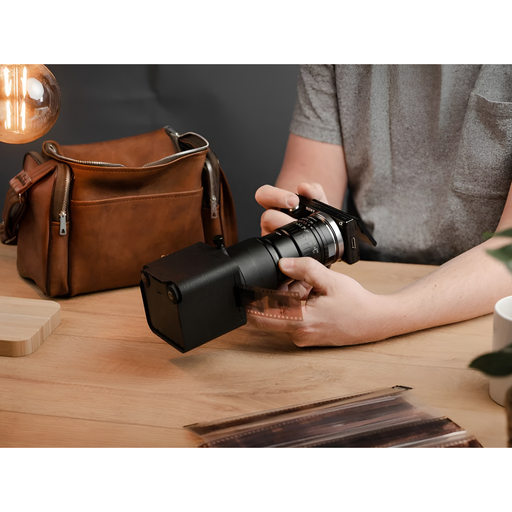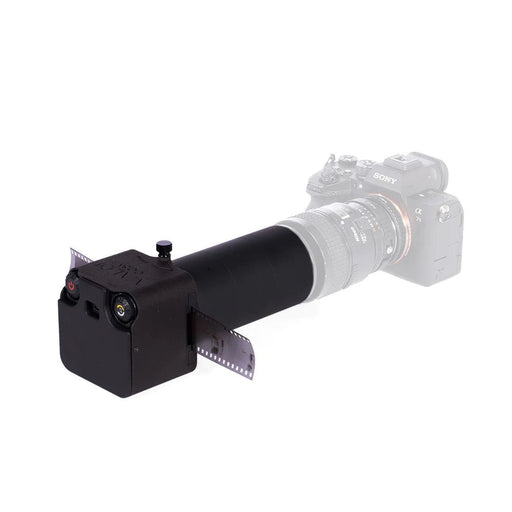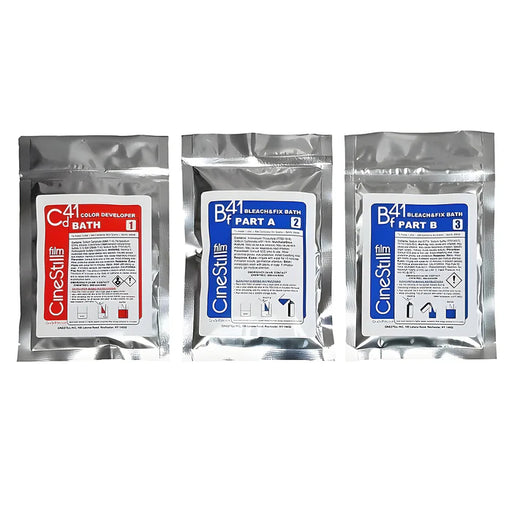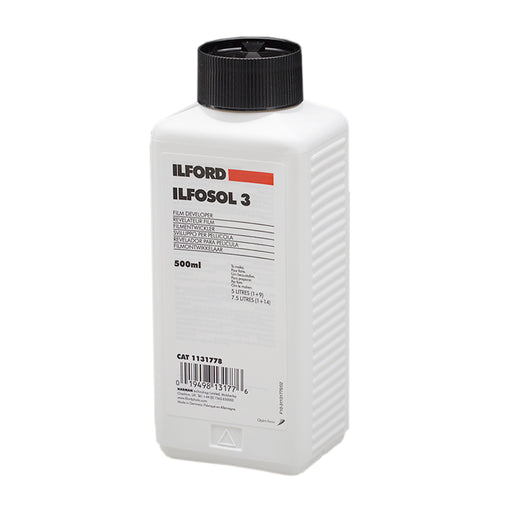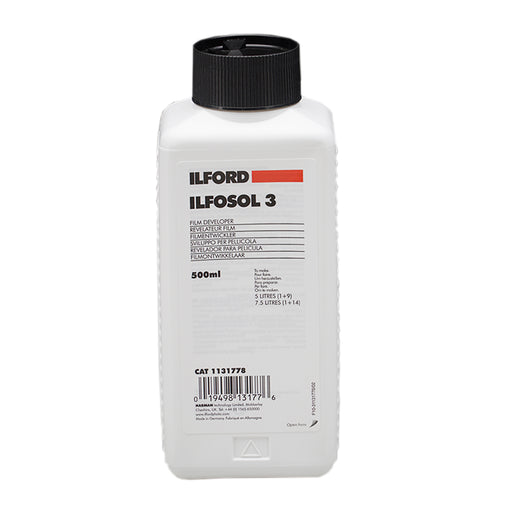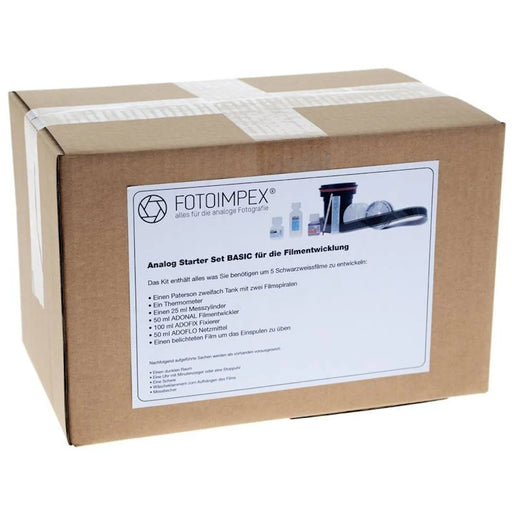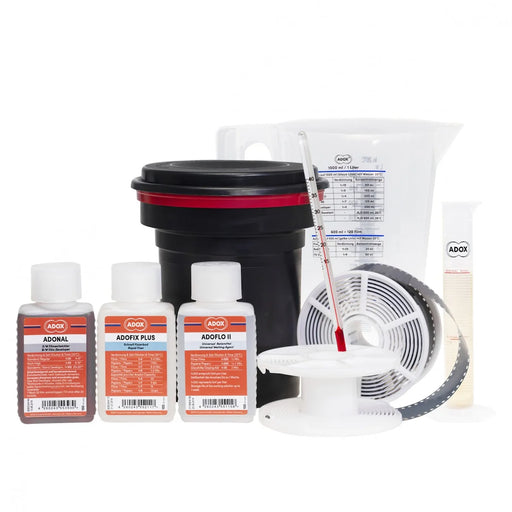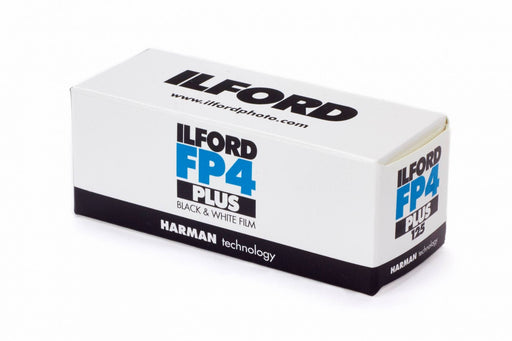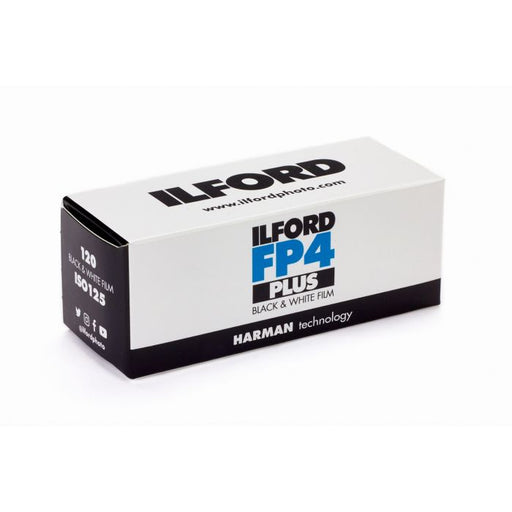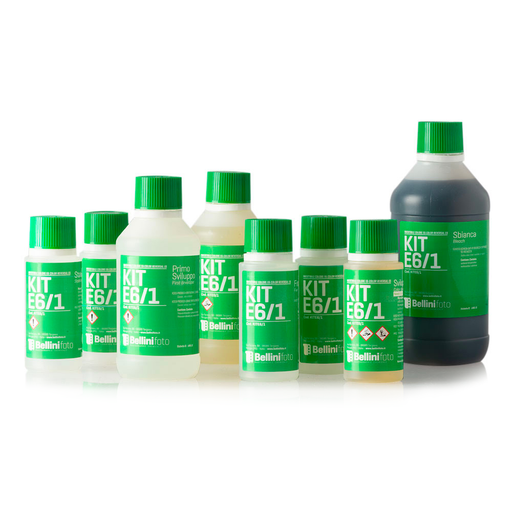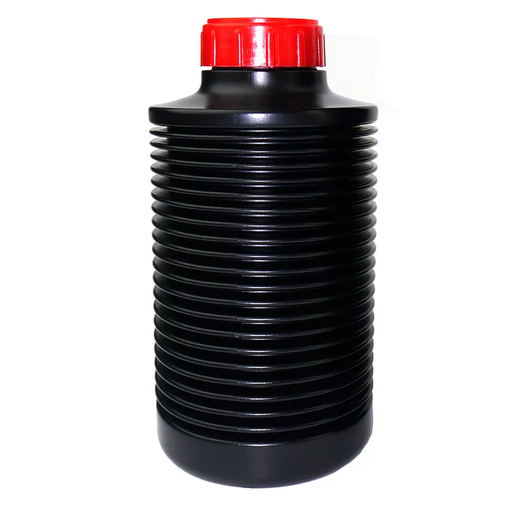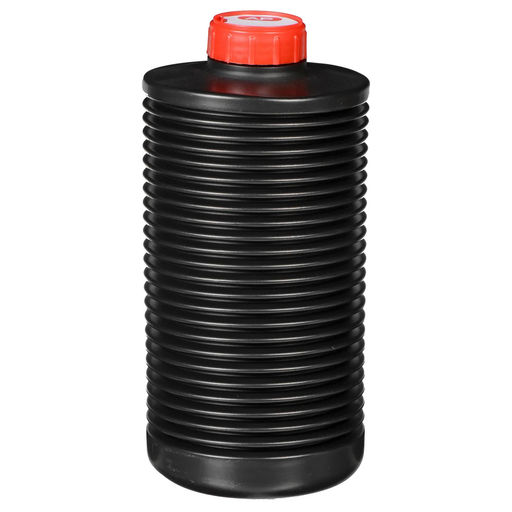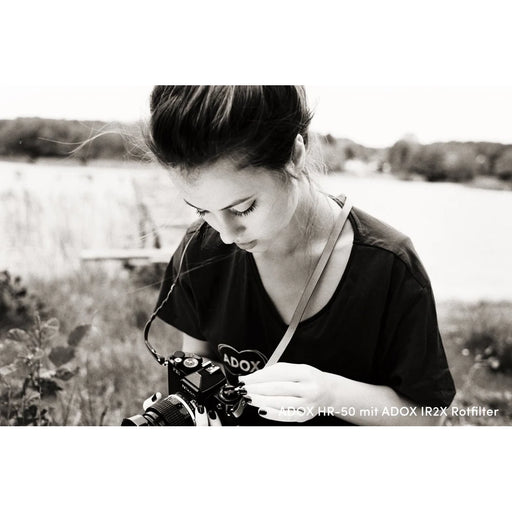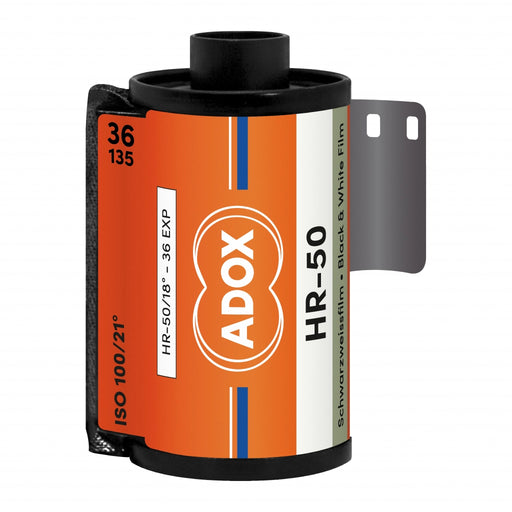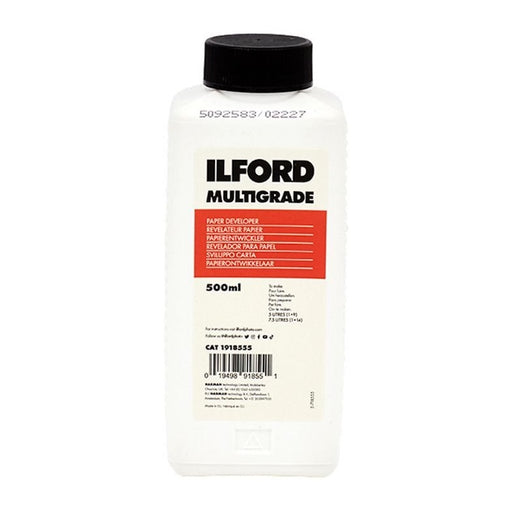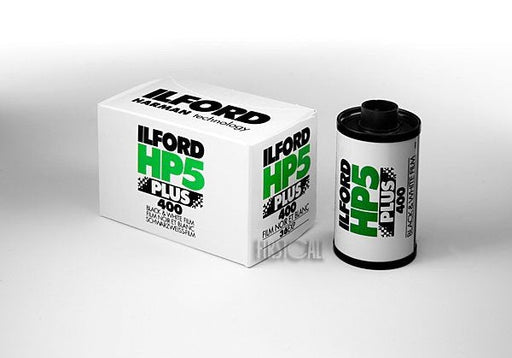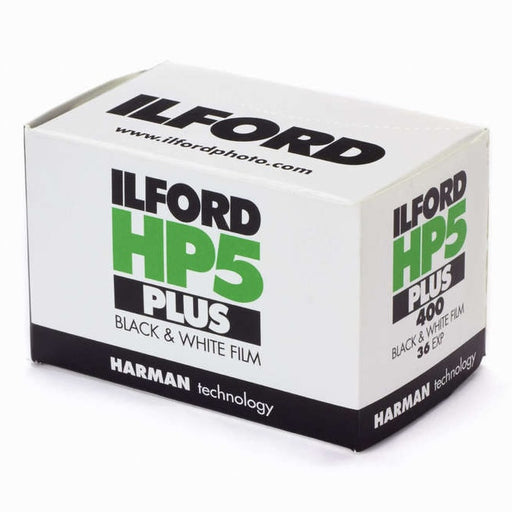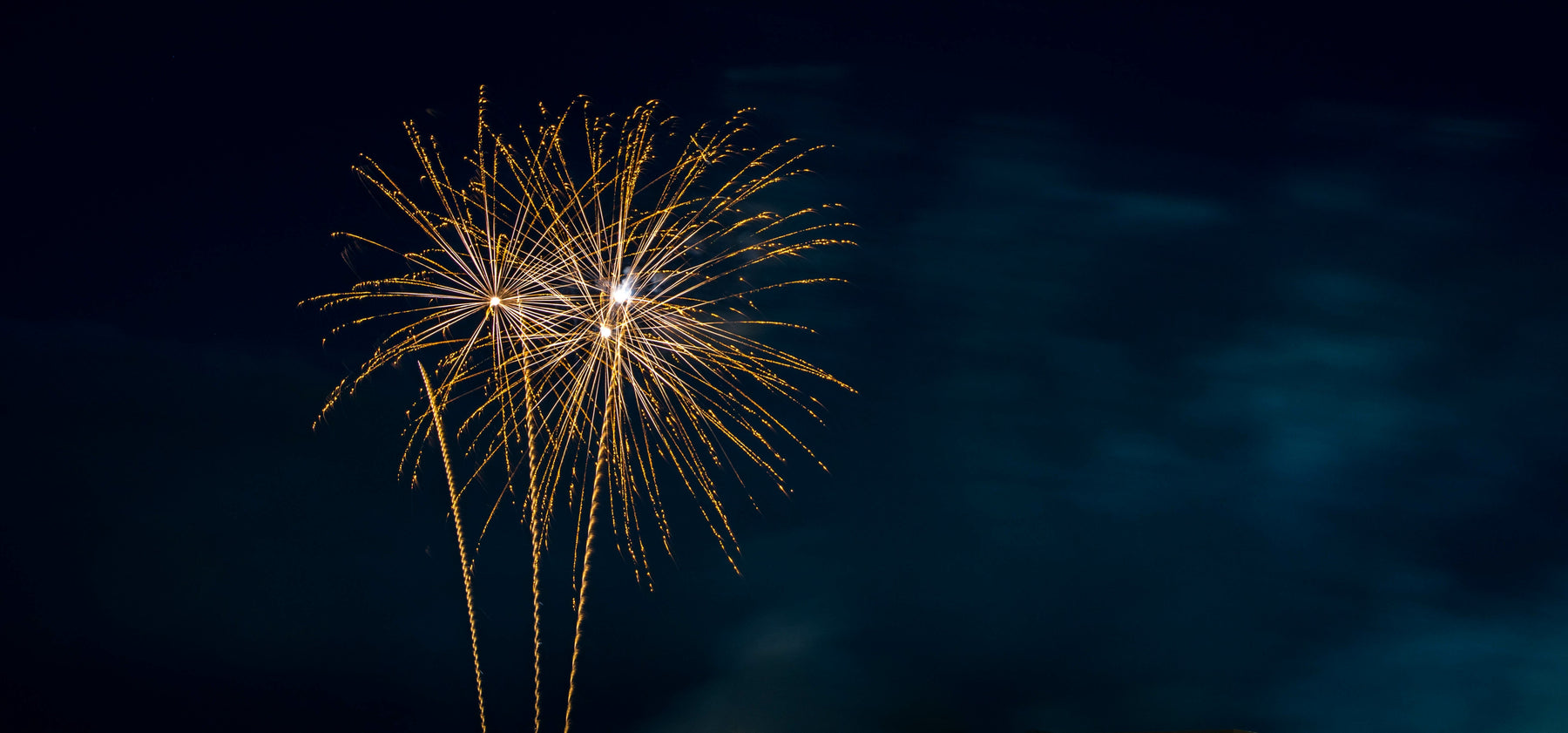
How to Photograph Fireworks Correctly
Nine essential tips for photographing fireworks
Photographing fireworks is remarkably easy, but a little preparation and thinking will help you get the best shots at your local display. Andrew James, in his article for Amateur Photographer, offers nine tips as how to get better shots.
Photographing fireworks requires you to take full manual control over the camera, so if you’ve never strayed away from auto before now is the time to do it.
You’ll also be working in the dark, so it pays to do some preparation first. Here are some things you need to know about photographing fireworks before venturing out.

1. Use a tripod
If you are going to be photographing fireworks, you will need a tripod. As you will be working in the dark and exposures are likely to be 10secs or more, the camera must be fixed securely in place so that no camera movement can ruin your shot. Also ensure that all three legs are tightly locked so they won’t slip. Even a minuscule amount of movement can spoil the image, so don’t take that chance.
Remember to switch off any image stabilisation in your lens because it won’t be necessary when the camera is on a tripod – and it could actually cause the image to blur slightly.

2. Remote release
There is no point mounting the camera on a tripod if you then jog the camera when you fire the shutter by hand. Instead, you should use a remote or cable release to allow safe, jog-free operation of the shutter.
If you don’t own a remote release you can use your camera’s self-timer, but the delay between pressing the shutter button and the exposure starting means you might miss the optimum moment to take the shot. To avoid this as much as possible, set the time delay from pressing the button to the shutter firing to the minimum that your camera allows.
3. Focusing
If it’s so dark that you can’t see your hand in front of your face, how are you going to focus? The simplest method is to manually focus the camera to infinity, which should be marked on your lens. You will normally be far enough from the fireworks so that once the lens is set to infinity, you can just leave it there.
Alternatively, shine a torch onto something approximately one third of the way into the scene and focus on that point. This could be the heads of the crowd watching the fireworks display, for example.

4. Head torch
A head torch is a hugely practical piece of kit that is perfect for anyone who regularly takes photos at night. You can use it to help illuminate the camera when you need to make adjustments, or to shine on objects you need to focus on. Because the torch is fixed on your head, both hands are left free to operate your kit, or even eat a hotdog!
5. Scout out your location in daylight
If you intend to visit a local fireworks display, then it’s definitely worth casing the joint first! Find out where the fireworks are going to be released from and where the front of the crowd will be, as it will help give you an idea of where best to set up. Look for high ground to shoot from, and consider what is in the background and anything that can be used to give your image a fresh twist.

6. Take a stepladder or box
If you’re lucky enough to find some high ground to shoot from, you’re doing well; if not, you might find yourself stuck behind a crowd of spectators. To frame them neatly at the base of your shot, you’ll need your tripod extended to its maximum height. But unless you are equally tall, this makes it difficult to look through the viewfinder to frame the scene or make exposure adjustments. So borrow a tip from the paparazzi who often jump onto little step ladders or boxes to give themselves a boost in height.
7. Play with the exposure
It is all too easy to underexpose or overexpose your fireworks shots. If you find that your fireworks look too bright, try altering your settings to achieve a darker sky and crisper fireworks.

8. Use reflections
If you’re lucky enough to be photographing fireworks near water, then reflections work really well. Being further from the display might mean fewer crowds to contend with too!

9. Tips for taking the shot
1. Frame your shot and focus either to infinity or on a point roughly one-third of the way into the scene
2. Set your camera to manual exposure or bulb. Manual exposure is probably best to start with, as exposures are unlikely to last much more than 5-10secs. Bulb is better when you need to keep the shutter open for a much longer period of time because the shutter remains open until you press the shutter button a second time to close it
3. Set a low ISO, such as ISO 100 or 200. This will help keep noise to a minimum, and because the camera is fixed on a tripod you don’t need to worry about setting a fast shutter speed
4. Set your aperture to f/8 as a starting point and your exposure to 5secs. When a firework goes up, open the shutter using the remote release, then review the result on the back screen
5. If you want to ensure you are getting more than one firework exploding within the scene, take a small black card that you can hold over the front of the lens. If you don’t have a card, then a cupped, dark-gloved hand will work, but take care not to touch the lens itself. Extend the exposure time and hold the card over the front of the lens between fireworks to prevent any ambient light entering. The shutter may be open for 15secs or 20secs, but as you are holding back the exposure with the card, the camera is only capturing the light trails from each separate explosion. This technique works best with bulb mode, especially if you need to extend the exposure.
Article reproduced and Copyright: Amateur Photographer 2017
Browse All Products
Kodak Charmera Keychain Digital Camera (Blind Box)
Backorder – call for availability
Important Notice About ReturnsThe Kodak Charmera is sold in sealed blind boxes. Each box contains one random design from the series of seven, inclu...
View full detailsAdox Adonal Film Developer (Rodinal formula), 500ml
In Stock
Adonal is made to the same formulation as Rodinal and is an acutance enhancing film developer. You should achieve identical results, albeit that it...
View full detailsBellini C-41 Kit, MonoPart, 1 litre
Available – allow 3 Weeks
There has been a massive increase in new chemical suppliers for C41 colour negative film in the last year to cope with the renewed and increased in...
View full detailsIlford Ilfostop Stop Bath , 500 ml
In Stock
Ilford Ilfostop is a low odour citric acid stop bath. After development we recommend that films and papers are rinsed in an acid stop bath to stop ...
View full detailsKentmere PAN 400 Black and White Film, ISO 400, 135-36
In Stock
Two new Kentmere films break new ground and offer incredible value. One of the most interesting new releases has come from Kentmere confirming th...
View full detailsIlford Rapid Fixer, 500 ml
In Stock
Ilford Rapid Fixer is a non-hardening rapid fixer supplied as a liquid concentrate for fixing black and white film and paper in all manual and ...
View full detailsFotospeed RA50 Rinse Aid Wetting Agent, 500 ml
In Stock
Fotospeed RA50 is a highly concentrated liquid designed to greatly reduce surface tension to allow the easy dispersion of water from the surface of...
View full detailsJacquard Cyanotype Ferric Ammonium Citrate - 230 gram
In Stock
We all know that in modern day Britain it can be difficult to accommodate a darkroom at home and even in education establishments there might not b...
View full detailsJacquard Cyanotype Potassium Ferricyanide - 230 gram
In Stock
We all know that in modern day Britain it can be difficult to accommodate a darkroom at home and even in education establishments there might not b...
View full detailsIlford Rapid Fixer 1L
In Stock
Ilford Rapid Fixer is a non-hardening rapid fixer supplied as a liquid concentrate for fixing black and white film and paper in all manual and mach...
View full detailsValoi easy35 Main Kit
In Stock
The VALOI easy35 is an innovative, compact, and self-contained 35mm film scanning system that features a built-in light source and attaches directl...
View full detailsCineStill Cs41 Color Simplified Kit Powder
In Stock
If you can process your black and white film, you can make the step up to processing your own colour film so easily with this new kit from CineStil...
View full detailsJacquard Cyanotype Set
In Stock
We all know that in modern-day Britain it can be difficult to accommodate a darkroom at home, and even in educational establishments there might no...
View full detailsIlford Ilfosol 3 Film Developer, 500 ml
In Stock
Although we stock 40 different types of developer, two liquid film developers outsell all the remainder - the new Ilford Ilfosol 3 and Fotospeed FD...
View full detailsFotoimpex Starter Developing Kit for Black and White Film
Available – allow 2-3 Weeks
This kit is a great way to get you processing black and white film for the first time. It is the only kit we sell that contains both the accessorie...
View full detailsIlford FP4 Plus 120, ISO 125
In Stock
ILFORD FP4 Plus is an exceptionally fine grain, medium speed black and white film. It is ideal for high quality indoor and outdoor photography, par...
View full detailsBellini E6 Kit, Six Bath, 1 litre
In Stock
This top-quality, excellent value kit is unique. It is the only small volume E6 Kit you can buy (processes eight films that still uses the 'traditi...
View full detailsKentmere VC Select Fine Lustre, 8 x 10in, Pack of 100
In Stock
Kentmere VC Select is a medium-weight, resin-coated multi-contrast bromide-iodide paper. It exhibits neutral to cold tones from its bright white ...
View full detailsIlford HP5 Plus 120, ISO 400
In Stock
ILFORD HP5 PLUS is a high-speed black-and-white film, perfect for action, low-light, and general-purpose photography. While rated at ISO 400/27°, H...
View full detailsCineStill DF 96 Monobath Developer & Fixer, 1 litre
In Stock
Developing black and white film is so simple with the CineStill Df96 Monobath. The angst of too much development, dilution, time or agitation are a...
View full detailsADOX C-TEC C-41 Negative Kit Rapid for 12-16 Films 1L
In Stock
The Colour Negative C-41 chemistry (2-bath) can be used for manual or rotary processing and consists of colour developer, bleach fix, and stabilize...
View full detailsAP Chemical Storage Bottle 1 litre, 3395Z
In Stock
The AP air reduction storage bottle compresses to allow complete expulsion of air and thereby prolonging the shelf life of your chemicals.
Adox HR-50, 135-36, ISO 50
In Stock
Adox HR-50 is a new film whose emulsion is normally used for extra sharp for technical purposes. The grain is ultrafine and is super-panchromatical...
View full detailsIlford Multigrade Paper Developer 500ml
In Stock
Ilford Multigrade is a high-quality liquid concentrate developer specifically formulated for both resin-coated (RC) and fibre-based (FB) black &...
View full detailsIlford HP5 Plus 135-36, ISO 400
In Stock
ILFORD HP5 PLUS is a high-speed black-and-white film, perfect for action, low-light, and general-purpose photography. While rated at ISO 400/27...
View full detailsLatest News
-
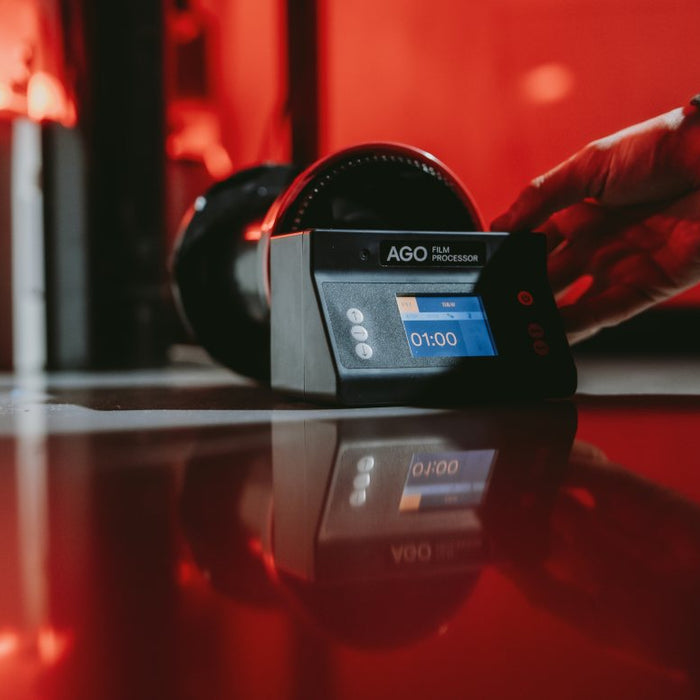
AGO Processor Review: A Game-Changer for Film Processing in the Classroom
Read nowDiscover how the AGO Processor is transforming film photography education at Buckinghamshire College. From user-friendly controls and custom time sheets to high-volume processing and student-led colour development, this innovative tool is empowering classrooms with efficient, hands-on film processing.
-
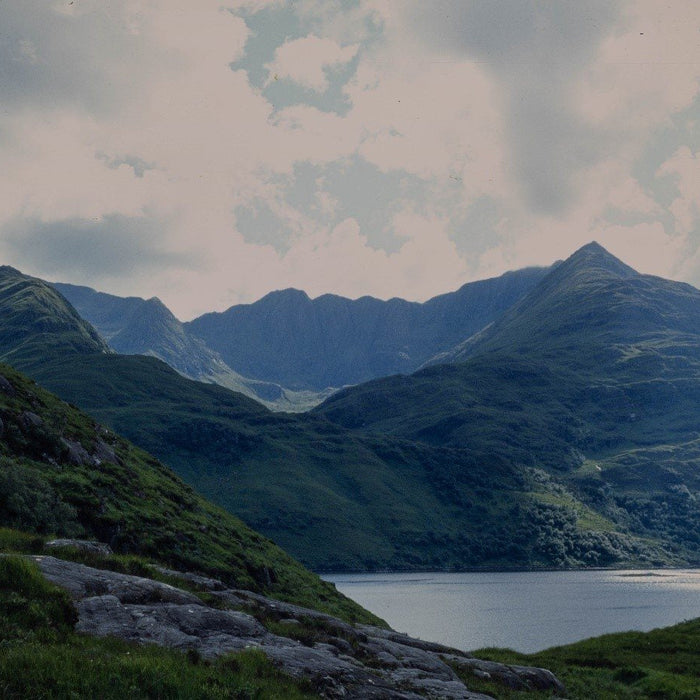
Scan Your Own Films – Valoi Easy35 Review
Read nowDiscover why the VALOI easy35 is a top choice for scanning 35mm film at home using a digital camera and macro lens. This blog reviews its features, ease of use, and how it compares to lab scans, delivering faster results, higher image quality, and full creative control.
-

Newsletter October 2024
Read nowDiscover the latest in film photography gear and supplies in our October 2024 newsletter. Learn how the AGO Film Processor’s time-compensated development can save you chemicals and simplify processing. Universities and schools can get 20% off this innovative tool. Don’t miss the Jacquard Cyanotype Kit, perfect for creative sun printing, now available for pre-order.

